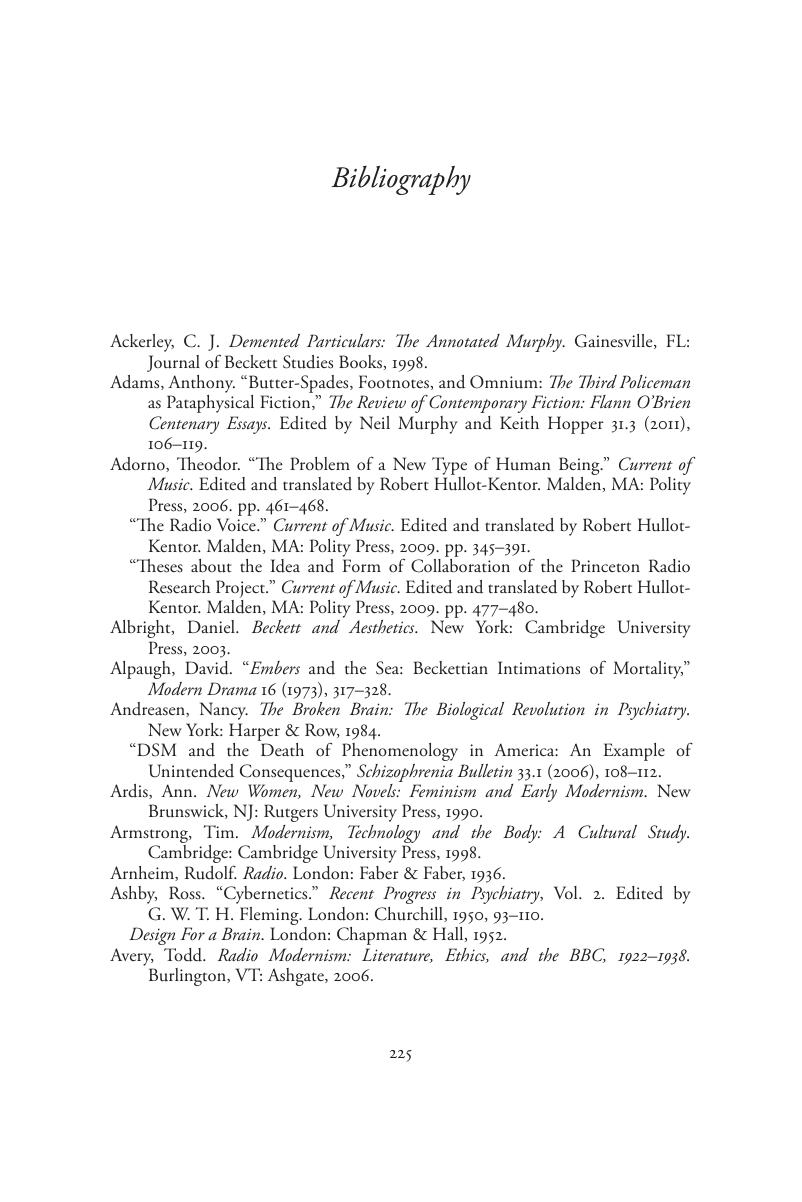Book contents
- Modernism and the Machinery of Madness
- Modernism and the Machinery of Madness
- Copyright page
- Dedication
- Contents
- Acknowledgments
- Introduction
- Chapter 1 Fables of Regression
- Chapter 2 Modernist Influencing Machines
- Chapter 3 On Worlding and Unworlding in Fiction and Delusion
- Chapter 4 Flann O’Brien and Authorship as a Practice of “Sane Madness”
- Chapter 5 “Prey to Communications”
- Conclusion
- Notes
- Bibliography
- Index
- References
Bibliography
Published online by Cambridge University Press: 25 October 2017
- Modernism and the Machinery of Madness
- Modernism and the Machinery of Madness
- Copyright page
- Dedication
- Contents
- Acknowledgments
- Introduction
- Chapter 1 Fables of Regression
- Chapter 2 Modernist Influencing Machines
- Chapter 3 On Worlding and Unworlding in Fiction and Delusion
- Chapter 4 Flann O’Brien and Authorship as a Practice of “Sane Madness”
- Chapter 5 “Prey to Communications”
- Conclusion
- Notes
- Bibliography
- Index
- References
Summary

- Type
- Chapter
- Information
- Modernism and the Machinery of MadnessPsychosis, Technology, and Narrative Worlds, pp. 225 - 240Publisher: Cambridge University PressPrint publication year: 2017



